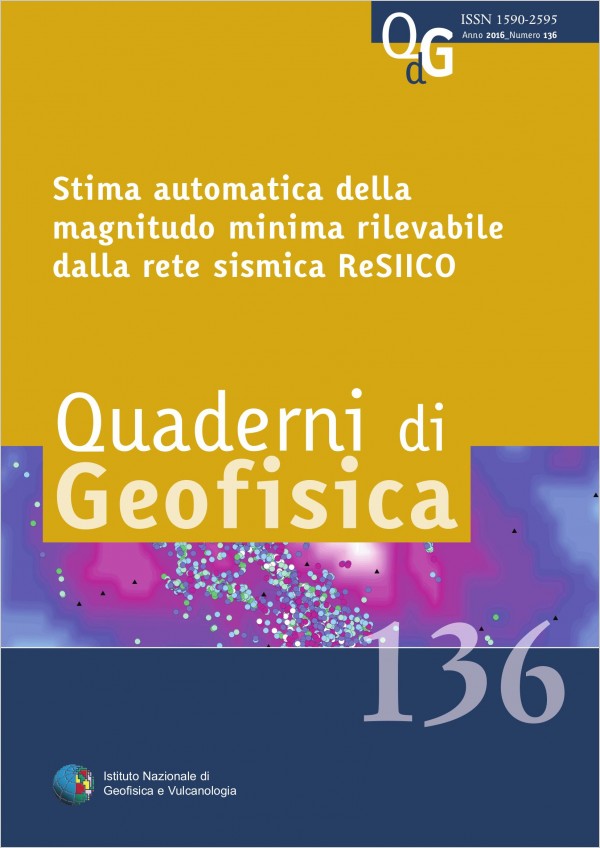Stima automatica della magnitudo minima rilevabile dalla rete sismica ReSIICO
Main Article Content
Abstract
The ability of a seismic network to detect signals of earthquakes depends on the geometry of the network, the instrumentation used and the noise present at each station. This ability is not constant, as the state of health of seismic stations and the radiation characteristics of the noise sources change in time and geometry and instrumentation of the network are not homogeneous in space. An automatic procedure to produce maps of the minimum magnitude detectable from the network (detection) was implemented, using the software PQLX to calculate the noise levels and an empirical relationship to estimate the signal amplitude of a seismic
event to the stations. After the description of the automatic procedure and of the different maps that are produced, the results are compared to the
seismicity actually recorded. The area of the Upper Tiber Valley was chosen for the density of stations and the high rate of seismicity.
Continuous monitoring of the detection is useful to check the performance of the network but also to explain some features of the catalog of earthquakes that results from the interpretation of the signals recorded by the network. In fact, changes of seismicity rate between day and night or during the presence of disturbances are explained through the maps of detection.
event to the stations. After the description of the automatic procedure and of the different maps that are produced, the results are compared to the
seismicity actually recorded. The area of the Upper Tiber Valley was chosen for the density of stations and the high rate of seismicity.
Continuous monitoring of the detection is useful to check the performance of the network but also to explain some features of the catalog of earthquakes that results from the interpretation of the signals recorded by the network. In fact, changes of seismicity rate between day and night or during the presence of disturbances are explained through the maps of detection.
Article Details
Issue
Section
Article

This work is licensed under a Creative Commons Attribution 4.0 International License.

